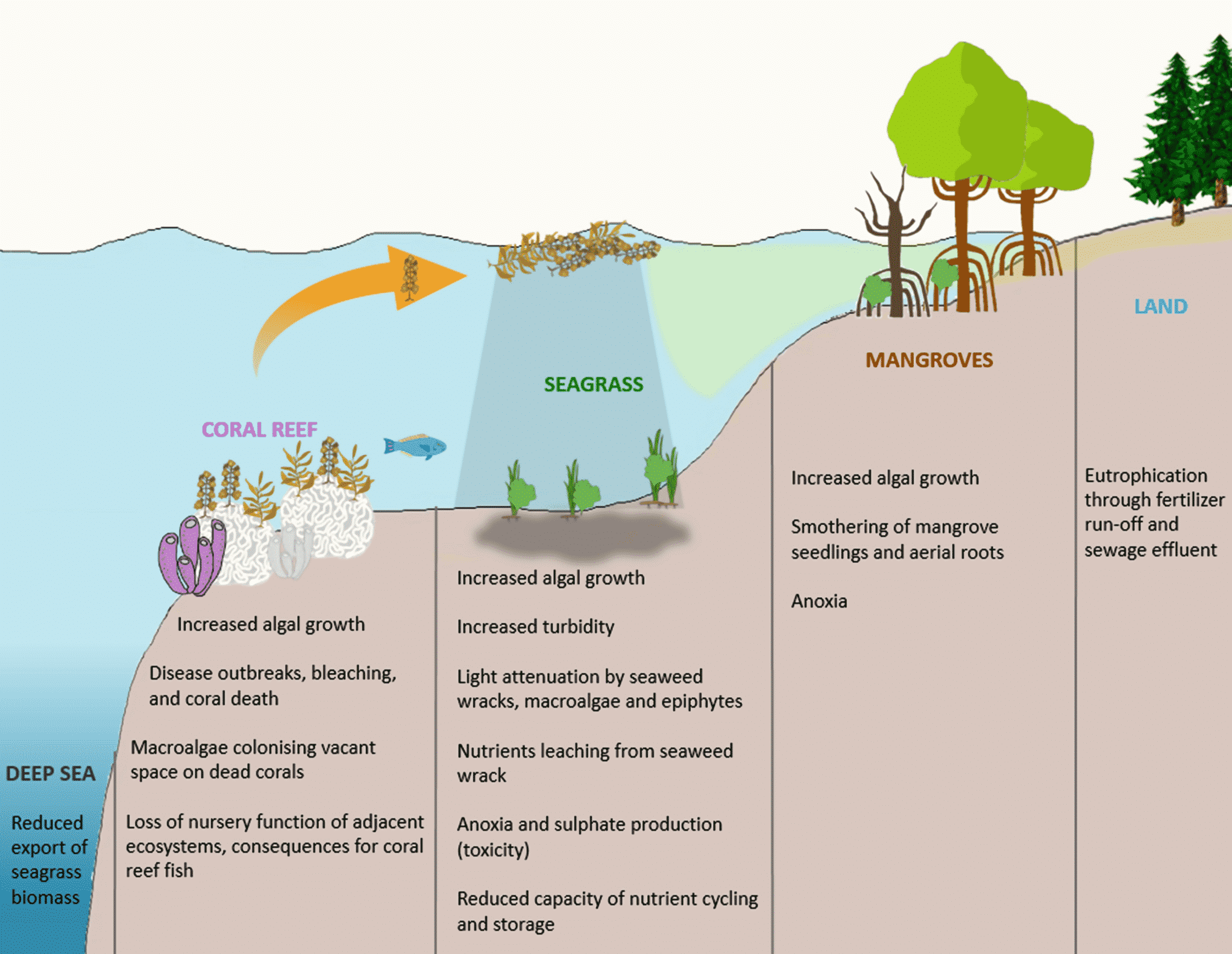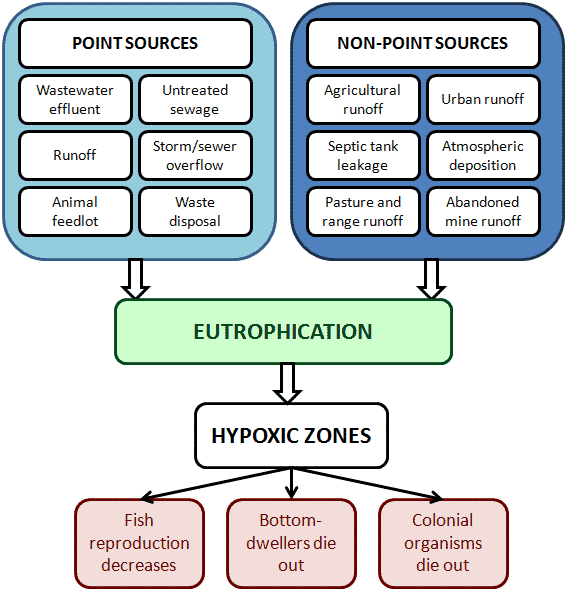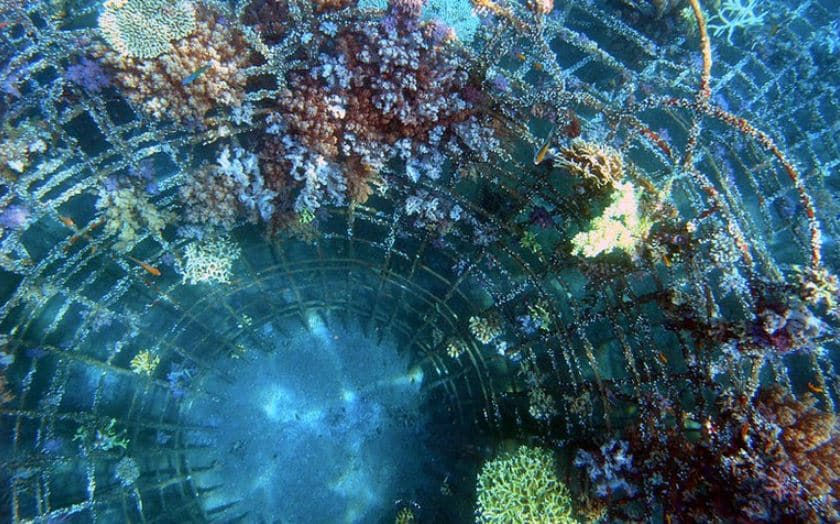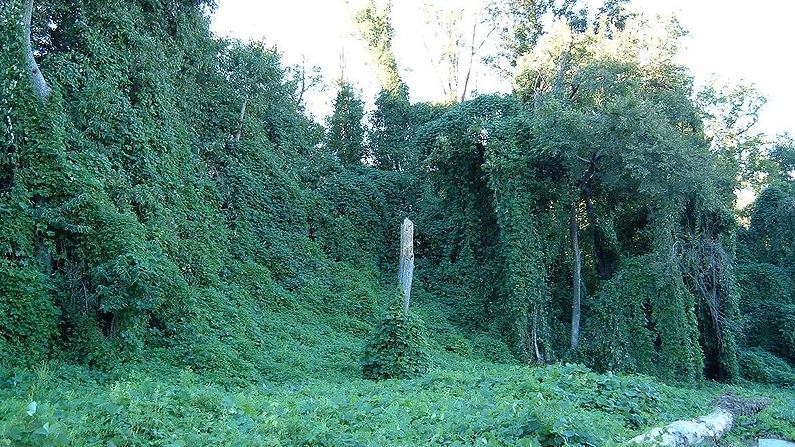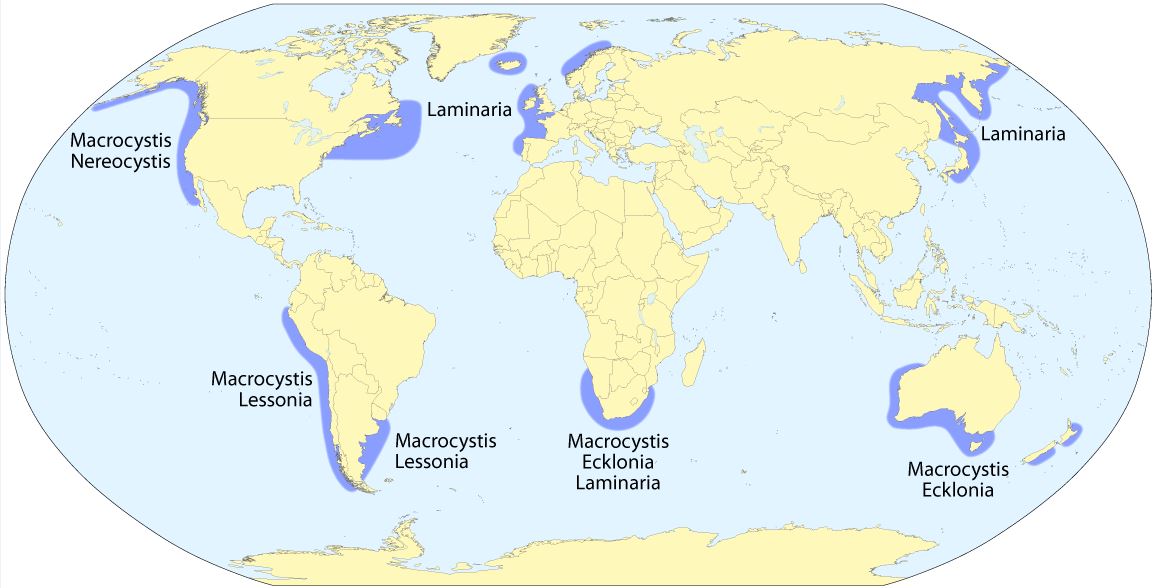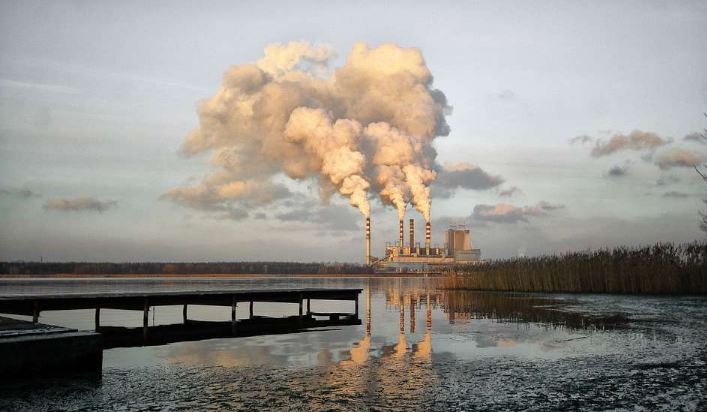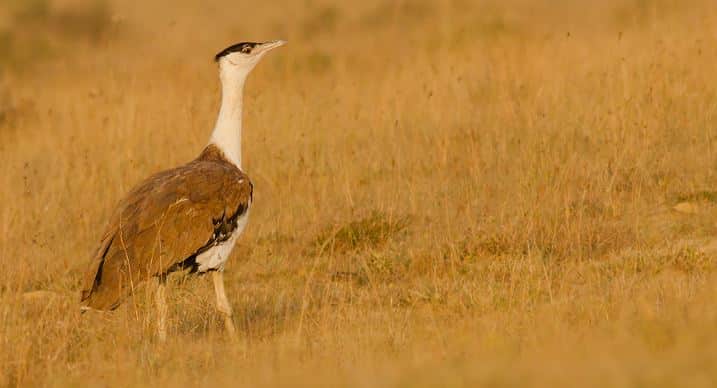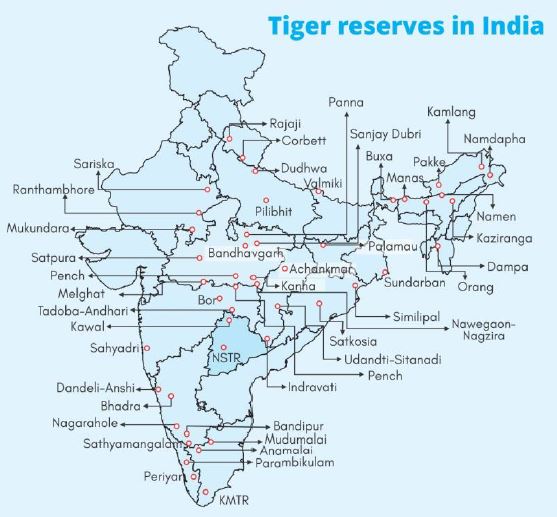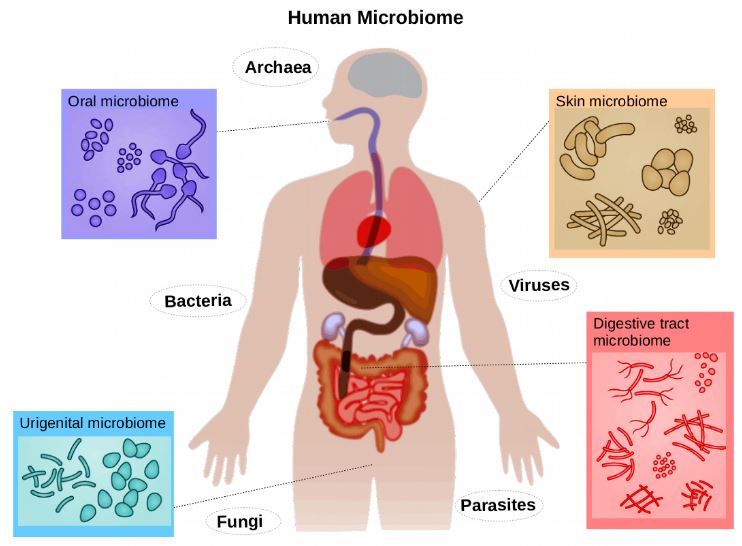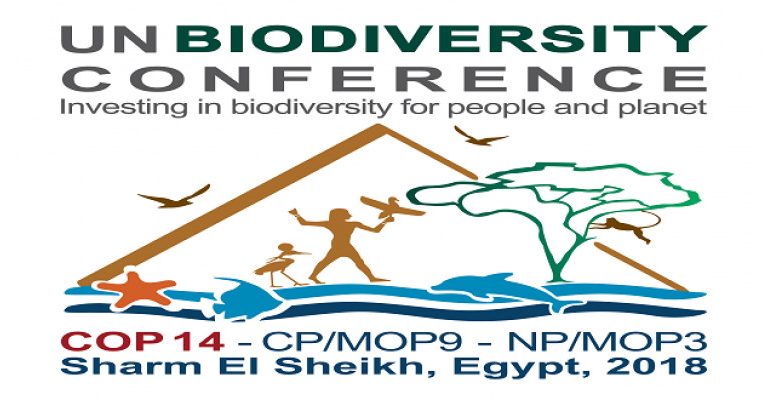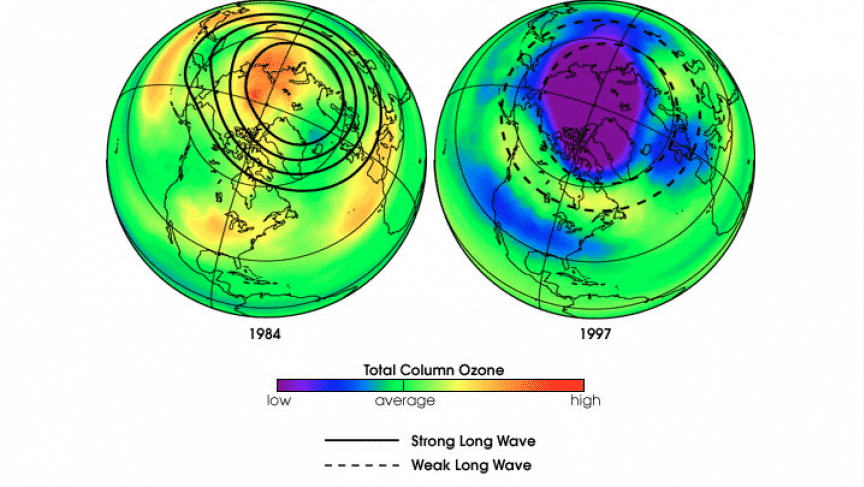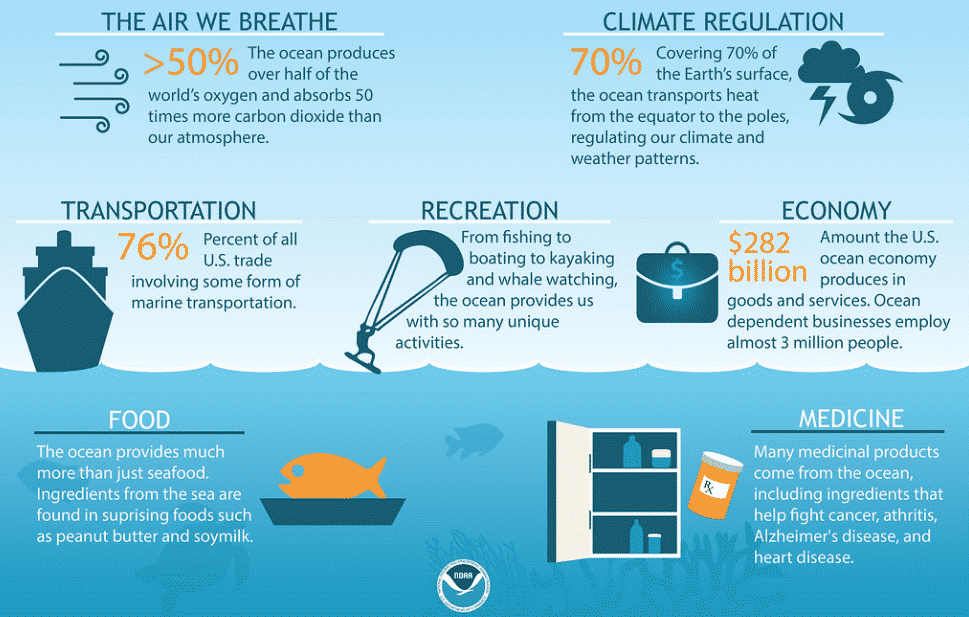
Global Warming and its Major effects on Environment and Human Health
The “natural” greenhouse effect has been part of the basis of life on Earth since the early atmosphere formed. Without it, our planet would be a frozen mass, perhaps 30°C (54°F) colder than it is today. Over the last three decades, human-produced changes to the greenhouse effect have been brought to the attention of the media and the general public by the scientific community. Climate change has brought about possibly permanent alterations to Earth’s geological, biological and ecological systems
Data gathered from surface weather stations, ships, buoys, balloons, satellites, ice cores, and other paleoclimatological sources indicate that the climate of Earth is becoming warmer. This warming trend became known to the public as global warming, although many climate scientists prefer the more general term climate change because it encompasses the many effects of warming, such as changes in precipitation patterns.
Effects of global warming on Environment, human health and ecosystem:-
- Hotter days: 2017 was the hottest year on record, the previous record was broken in 2015, and 2019 is expected to set a new record for the third year in a row.
- Rising sea levels: Warmer temperatures also result in the expansion of the water’s mass, which causes sea levels to rise, threatening low-lying islands and coastal cities.
- More frequent and intense extreme weather events: Extreme weather events like bush-fires, cyclones, droughts and floods are becoming more frequent and more intense as a result of global warming.
- Species: One in six species is at risk of extinction because of climate change.
- Food and farming: Changes to rainfall patterns, increasingly severe drought, more frequent heat waves, flooding and extreme weather make it more difficult for farmers to graze livestock and grow produce, reducing food availability and making it more expensive to buy.
- Water: Reduced rainfall and increasingly severe droughts may lead to water shortages.
- Coastal Erosion: Rising sea levels and more frequent and intense storm surges will see more erosion of Australia’s coastline, wearing away and inundating community and residential properties.
- Health: Increasingly severe and frequent heat waves may lead to death and illness, especially among the elderly. Higher temperatures and humidity could also produce more mosquito-borne disease.
- Damage to homes: Increasingly severe extreme weather events like bush-fires, storms, floods, cyclones and coastal erosion, will see increased damage to homes, as well as more costly insurance premiums.
- Coral bleaching: Rising temperatures and acidity within our oceans is contributing to extreme coral bleaching events, like the 2016 event that destroyed more than one-third of the Great Barrier Reef.
Increasing Greenhouse Gas Concentrations | UPSC – IAS
The cause of global climate change appears to be human enhanced greenhouse effect. Since the industrial era began in the mid-1700s, human activities have increased the concentrations of greenhouse gases – such as:-
- Carbon dioxide,
- Methane,
- Tropospheric ozone, and
- Chlorofluorocarbons in the atmosphere.
As greenhouse gas concentrations in the atmosphere increase, more terrestrial radiation is retained in the lower atmosphere, thereby increasing global temperatures. Carbon dioxide (CO2) is thought to be responsible for at least 60 percent of the human-enhanced greenhouse effect. CO2 concentrations have been rising steadily since the Industrial Revolution began in the mid-1700s. Carbon dioxide is a principal by-product of combustion of anything containing carbon, such as coal and petroleum
Since 1750 – when estimates show the concentration of CO2 in the atmosphere was about 280 parts per million (ppm) – carbon dioxide levels in the atmosphere have increased by more than 40 percent. The latest paleoclimatological data indicates that the current (May 2012) concentration of CO2 in the atmosphere of about 396 ppm is greater than at any time in the last 800,000 years.
Many other greenhouse gases have been added to the atmosphere by human activity.
- Methane – produced by grazing livestock and rice paddies and as a by-product of the combustion of wood,
- Natural gas, coal, and oil – has more than doubled since 1750 and is about 25 times more potent as a greenhouse gas than CO2.
- Nitrous Oxide – which comes from chemical fertilizers and automobile emissions—has increased by about 18 percent since 1750.
- Chlorofluorocarbons (CFCs) – are synthetic chemicals that were widely used as refrigerants and as propellants in spray cans until quite recently.
Many of these gases, and others, are being released into the atmosphere at accelerating rates. The increase in greenhouse gas concentrations, especially carbon dioxide, correlates well with the observed increase in global temperature: as CO2 has increased, so have average global temperatures.
Acid Rain and its Sources | UPSC – IAS
One of the most troublesome environmental problems since the latter part of the twentieth century is acid rain— more generally called acid precipitation or acid deposition. This term refers to the deposition of either wet or dry acidic materials from the atmosphere on Earth’s surface. Although most conspicuously associated with rainfall, the pollutants may fall to Earth with snow, sleet, hail, or fog or in the dry form of gases or particulate matter.
Sources of Acid Precipitation:-
- Sulfuric and nitric acids are the principal culprits recognized thus far. Evidence indicates that the principal human induced sources are sulfur dioxide (SO2) emissions from smokestacks (particularly electric utility companies in the United States, the smelting of metal ores in Canada), and nitrogen oxides (NOx) from motor vehicle exhaust.
- These and other emissions of sulfur and nitrogen compounds are expelled into the air, where they may drift hundreds or even thousands of kilometers by winds. During this time they may mix with atmospheric moisture to form the sulfuric and nitric acids that are precipitated sooner or later.
Depletion of the Ozone Layer | UPSC – IAS
Ozone is naturally produced in the stratosphere. It is a form of oxygen molecule consisting of three atoms of oxygen (O3) rather than the more common two atoms (O2). Ozone is created in the upper atmosphere by the action of ultraviolet solar radiation on diatomic oxygen (O2) molecules.
Ultraviolet (UV) radiation from the Sun is divided into three bands (from longest to shortest wavelengths): UV-A, UV-B, and UV-C. In the stratosphere, under the influence of UV-C, O2 molecules split into oxygen atoms; some of the free oxygen atoms combine with O2 molecules to form O2.
Natural Formation of Ozone – The natural breakdown of ozone in the stratosphere occurs when, under the influence of UV-B and UV-C, ozone breaks down into O2 and a free oxygen atom. Through this ongoing natural process of ozone formation and breakdown, nearly all of UV-C and much of UV-B radiation is absorbed by the ozone layer. The absorption of UV radiation in this photochemical process also serves to warm the stratosphere.
About 90 percent of all atmospheric ozone is found in the stratosphere where it forms a fragile “shield” by absorbing most of the potentially dangerous ultraviolet radiation from the Sun. Ultraviolet radiation can be biologically harmful in many ways.
- Prolonged exposure to UV radiation is linked to skin cancer – both the generally curable nonmelanoma varieties as well as much more serious melanoma;
- It is also linked to increased risk for cataracts;
- It can suppress the human immune system,
- Diminish the yield of many crops,
- Disrupt the aquatic food chain by killing microorganisms such as phytoplankton on the ocean surface, and may have other negative effects still undiscovered.
Ozone is also produced near Earth’s surface in the troposphere through human activities, forming one of the components of photochemical smog. However, it was a thinning of the stratospheric ozone layer first observed in the 1970s that triggered extensive research and monitoring.
Greenhouse effect and its impact on earth | UPSC – IAS
The greenhouse effect is at work in the atmosphere. A number of gases in the atmosphere, known as greenhouse gases, readily transmit incoming shortwave radiation from the Sun but do not easily transmit outgoing longwave terrestrial radiation. The most important greenhouse gas is water vapor, followed by carbon dioxide. Many other trace gases such as methane also play a role, as do some kinds of clouds.
In the simplest terms, incoming shortwave solar radiation transmits through the atmosphere to Earth’s surface, where this energy is absorbed, increasing the temperature of the surface. However, the longwave radiation emitted by Earth’s surface is inhibited from transmitting back through the atmosphere by the greenhouse gases. Much of this outgoing terrestrial radiation is absorbed by greenhouse gases and clouds, and then reradiated back toward the surface, hence delaying this energy loss to space.
- The greenhouse effect is one of the most important warming processes in the troposphere. The greenhouse effect keeps Earth’s surface and lower troposphere much warmer than would be the case if there were no atmosphere – without the greenhouse effect, the average temperature of Earth would be about −15°C (5°F) rather than the present average of 15°C (59°F).
- Although the ongoing, natural greenhouse effect in the atmosphere makes life as we know it possible, over the last century or so a significant increase in greenhouse gas concentration – especially carbon dioxide – has been measured.
- This increase in atmospheric carbon dioxide is closely associated with human activity, especially the burning of fossil fuels such as petroleum and coal (carbon dioxide is one of the by-products of combustion).
- The increase in greenhouse gas concentration has been accompanied by a slight, yet nonetheless significant, increase in average global temperature, raising the likelihood that humans are altering the global energy balance of the atmosphere. This important issue, commonly referred to as global warming.
Major greenhouse gases
Deforestation – Tropical Rainforest | UPSC – IAS
How does cutting down trees affect us and our environment? – Throughout much of history, most rainforests of the world were only moderately populated and as a consequence they were affected by human activities in limited ways.
- Since the twentieth century, however, rainforests have been exploited and devastated at an accelerating pace; and over the past 40 years or so, tropical deforestation has become one of Earth’s most serious environmental problems.
- The exact rate of deforestation around the world – in both the tropics and temperate forest regions – is not precisely known, but the United Nations Food and Agriculture Organization (FAO) estimates that between 2000 and 2010, about 13 million hectares (32 million acres) of forest were being lost each year.
- Between 1990 and 2005 about 42 million hectares (104 million acres) of rainforest was cleared in Brazil alone—the greatest total of any country during that time period and an area approximately equal to that of California. Indonesia ranked second with more than 25 million hectares (62 million acres) cleared during those years.
- In South and Southeast Asia, where commercial exploration, especially for teak and mahogany is important, about 45 percent of the original forest no longer exists. Approximately 40 percent of Latin America’s rainforest has been cleared. Much of the very rapid deforestation in Central America has been due to expanded cattle ranching.
- Deforestation of the Amazon region as a percentage of the total area of rainforest has been moderate (perhaps 20 percent of the total has been cleared). As the forest goes, so goes its habitability for both indigenous peoples and native animal life.
Causes of Acidification of Oceans
The oceans absorb carbon dioxide from the atmosphere. Perhaps one-third of the excess CO2 released into the air each year by human activity is absorbed by the oceans. When CO2 is taken in by the ocean, it forms carbonic acid (H2CO3), a weak acid.
Oceans are warming and acidifying: The oceans have absorbed most of extra heat and carbon dioxide (CO2) so far – more than the air – making the seas both warmer and more acidic. Warming waters are bleaching coral reefs and driving stronger storms. Rising ocean acidity threatens shellfish, including the tiny crustaceans without which marine food chains would collapse.
- Research now suggests that as a result of the great quantities of CO2 absorbed since the beginning of the industrial revolution, the ocean is becoming more acidic.
- Currently, ocean water is slightly alkaline, with a pH of 8.1. Although still alkaline, this value is estimated to be about 0.1 lower – in other words more acidic – than it was in the preindustrial era.
- Given the current rate of fossil fuel use and continued absorption of CO2 by the oceans, the pH of ocean water could drop to 7.7 by the end of this century.
- The consequences of a slightly more acidic ocean are not completely known, but it is likely that it will affect the growth of organisms such as coral polyps and microscopic creatures such as foraminifera that build their shells or exoskeletons from calcium carbonate (CaCO3) extracted from seawater.
- As the oceans become more acidic, there are fewer calcium ions in seawater and so the growth of calcium carbonate shells is inhibited.
- It is not clear if these creatures will be able to adapt to the changing chemistry of the ocean. Because foraminifera are at the bottom of the oceanic food web, among the potentially important consequences of a decline in their numbers would be the loss of food for a number of fish, such as mackerel and salmon.
- If the increased acidity of the oceans reduces the growth of coral polyps, coral reefs—already under stress worldwide from higher temperatures—might possibly degrade even further
- In addition to bleaching, coral reefs are being stressed by the slight acidification of the ocean waters caused by the absorption of carbon dioxide.
- In January 2009, an international panel of 155 marine scientists issued the Monaco Declaration, stating that damage from ocean acidification is already detectable, and that with the projected increase in atmospheric carbon dioxide – and the associated increased acidification of the ocean—many regions of the world will become “chemically inhospitable” to coral reefs by mid-century.
Sea level Rise Causes
- Ice caps and glaciers decreased in both hemispheres, contributing to sea level rise; the flow speed of some Greenland and Antarctic outlet glaciers has increased.
- Since 1980, temperatures at the top of the permafrost layer have increased by as much as 3°C (5.4°F), and since 1900 the extent of seasonally frozen ground has been reduced by about 7 percent.
El Niño and Global warming
- El Niño Periodic atmospheric and oceanic phenomenon of the tropical Pacific that typically involves the weakening or reversal of the trade winds and the warming of surface water off the west coast of South America.
- The warming of coastal waters during the 1982–83 El Niño was observed to cause coral bleaching in Panama; the 1997–98 El Niño was even stronger and caused bleaching in reefs around the world.
- El Niño’s strongest impacts are felt around the equatorial Pacific, they can affect weather around the world by influencing high and low pressure systems, winds and precipitation. And as the warmer ocean waters release excess energy (heat) into the atmosphere, global temperatures rise.
Why Ecosystem Loss ?
Global warming stresses ecosystems through temperature rises, water shortages, increased fire threats, drought, weed and pest invasions, intense storm damage and salt invasion.
Loss of biodiversity appears to affect ecosystems as much as climate change, pollution and other major forms of environmental stress, according to results of a new study by an international research team.
- Ecosystem perturbations driven by climate change have direct human impacts, including reduced water supply and quality, the loss of iconic species
- Hunting, habitat loss, and illegal bush-meat trade has raised the number of threatened primate specie
- The loss of coral reefs through bleaching and other natural and human-produced causes is alarming many researchers.
- When coral dies, an entire ecosystem is at risk: the fish and other creatures that depend on coral for survival are stressed, local fisheries can decline, the protection from storm waves offered to low-lying islands fringed with reefs is diminished, and, of course, the loss of species and biodiversity may be irreparable.
Land degradation and its Causes | UPSC – IAS
Land degradation is a process in which the value of the biophysical environment is affected by a combination of human-induced processes acting upon the land. It is viewed as any change or disturbance to the land perceived to be deleterious or undesirable.
Overcutting of vegetation occurs when people cut forests, woodlands and shrublands—to obtain timber, fuel-wood and other products—at a pace exceeding the rate of natural regrowth. This is frequent in semi-arid environments, where fuelwood shortages are often severe.
Land degradation caused by mining as it cause landslides Land degradation is a global problem largely related to agricultural use.
Causes of Land degradation | UPSC – IAS
- Land clearance, such as clear cutting and deforestation
- Agricultural depletion of soil nutrients through poor farming practices
- Livestock including overgrazing and overdrafting
- Inappropriate irrigation and overdrafting
- Urban sprawl and commercial development
- Vehicle off-roading
- Quarrying of stone, sand, ore and minerals
- Increase in field size due to economies of scale, reducing shelter for wildlife, as hedgerows and copses disappear
- Exposure of naked soil after harvesting by heavy equipment
- Monoculture, destabilizing the local ecosystem
- Dumping of non-biodegradable trash, such as plastics
- Invasive Species
- Soil degradation, e.g.
- Soil contamination
- Soil erosion
- Soil acidification
- Loss of soil carbon
Human overpopulation occurs when the ecological footprint of a human population in a specific geographical location exceeds the carrying capacity of the place occupied by that group.
The Human overpopulation or population explosion has had various consequences:-
- Producing enough food for 7 billion humans has required farming techniques that pollute, reduce biodiversity, and destroy topsoil.
- Over the last 20,000 years, humans have deforested a major fraction of the Earth.
- In the last few centuries, humans have burned through a supply of carbon fuel that has been accumulating in the Earth for several billion years. The resulting carbon emissions are causing global climate change, with possibly catastrophic consequences.
- Humans have polluted the Earth, and especially its seas, with toxic chemicals, radioactive waste, and plastic debris. Many of these synthetic poisons will not disappear naturally for hundreds of thousands of years.
- Humans have colonized most of the animal-friendly land on Earth, and made it unlivable for most other species.
- Humans have hunted to extinction numerous species, either because they threatened us or fed us.
- These factors in combination are causing extinction of non-human species (even those we don’t eat or fear) on an unprecedented scale – about 1,000 times faster than the historical average.
Climate change and poverty | UPSC – IAS
- Climate change’s adverse effects mostly impact poor and low-income communities around the world. Those in poverty have a higher chance of experiencing the ill-effects climate change due to increased exposure and vulnerability
- Over 2 billion people – one third of the global population – are poor or near-poor and face persistent threats to their livelihoods, including from climate change. Estimates indicate that by 2030 more than 100 million people could fall back into extreme poverty due to climate change, while over 200 million people could be displaced due to more frequent and severe climatic disasters.
- Climate change and poverty link a process and a condition that are interrelated. While climate change and global warming affect the natural environment, especially agriculture, it also affects humans. Climate change globally impacts poverty, particularly in low-income communities.
Resource depletion
Resource depletion is the consumption of a resource faster than it can be replenished. Natural resources are commonly divided between renewable resources and non-renewable resources. Use of either of these forms of resources beyond their rate of replacement is considered to be resource depletion
Is Climate Change Natural or Anthropogenic ? | UPSC – IAS
Human impact on the environment or anthropogenic impact on the environment includes changes to biophysical environments and ecosystems, biodiversity, and natural resources caused directly or indirectly by humans, including
- Global warming,
- Environmental degradation (such as ocean acidification),
- Mass extinction
- Biodiversity loss
- Ecological crisis, and
- Ecological collapse.
Modifying the environment to fit the needs of society is causing severe effects, which become worse as the problem of human overpopulation continues. Some human activities that cause damage (either directly or indirectly) to the environment on a global scale include
- Human reproduction,
- Overconsumption,
- Overexploitation,
- Pollution, and
- Deforestation
Some of the problems, including global warming and biodiversity loss pose an existential risk to the human race, and overpopulation causes those problems.
Evidence of Current Climate Change
The Intergovernmental Panel on Climate Change (IPCC) is the most authoritative international body providing information about climate change to global leaders. In evaluating evidence of climate change over the last century, the Fourth Assessment Report of the IPCC released in 2007 concluded that the warming of global climate is “unequivocal.”
- The Fifth Assessment Report of the IPCC is due out beginning in 2013, and the findings it will present are expected to reinforce and clarify the findings of the Fourth Assessment Report (AR4). Findings of the AR4 along with updates from recent research include:
Changes in Air Temperature
Between 1906 and 2005 global average temperature increased by 0.74°C (1.33°F), with estimates ranging from 0.57 to 0.95°C (1.03 to 1.71°F).

The global temperature anomalies, or departure from average, from 1880 to 2011. (Image)
- Based on instrument data of temperature since 1880, 9 of the 10 warmest years on record have occurred since 2000 (1998 is the only year in the twentieth century that is in the “top ten”). The year 2011 ranked ninth overall, 0.51°C (0.92°F) warmer than the mid-twentieth century baseline and, as of this writing, 2012 was on track to be one of the warmest years on record.
- Over the last 50 years average global temperature has been increasing at a rate of about 0.13°C (0.23°F) per decade, almost twice the rate of the twentieth century as a whole. Average temperatures in the Northern Hemisphere during this time period are likely (greater than 66 percent probability) to be higher than at any time in at least 1300 years.
Changes in the Oceans due to Climate Change
Data since 1961 shows that global ocean temperature has increased to depths of at least 3000 meters (9800 feet), and that 80 percent of the energy added to the global climate system has been absorbed by the oceans.
- In part because of thermal expansion of seawater, global sea level has been rising. During the twentieth century, the estimated total global sea level rise was 0.17 meters (6.7 inches). The average rate of global sea level rise between 1961 and 2003 was about 1.8 mm (0.07 inches) per year, although since 1993 the rate has increased to about 3.27 mm (0.128 inches) per year.
Changes in Polar Regions
- In the Arctic, over the last 100 years average temperatures have been increasing at almost twice the global rate, although in this region there is high observed variability from decade to decade.
- Between 1978 and 2007, data from satellites shows that average extent of summer sea ice in the Arctic Was decreasing at a rate of about 7.4 percent per decade (by 2011, the rate had increased to 12 percent per decade). By the end of the summer in 2007 the extent of Arctic sea ice was the smallest measured since regular satellite monitoring of the ice pack began in 1979 (a new record low was set in 2012). Sea ice around Antarctica has shown great annual variation and local changes, but no statistically significant average trend was noted by the IPCC.
- Ice caps and glaciers decreased in both hemispheres, contributing to sea level rise; the flow speed of some Greenland and Antarctic outlet glaciers has increased.
- Since 1980, temperatures at the top of the permafrost layer have increased by as much as 3°C (5.4°F), and since 1900 the extent of seasonally frozen ground has been reduced by about 7 percent.
Changes in Weather Patterns:
- Observations indicate that there may have been an increase in the number of intense tropical cyclones in the North Atlantic Ocean basin since 1970, and this is correlated with an increase in sea-surface temperatures in the tropics.
- The average amount of water vapor in the atmosphere over both land and ocean areas has increased since the 1980s, consistent with the higher water vapor capacity of warmer air.
- Between 1900 and 2005 statistically significant increases in average precipitation were observed in parts of North America, South America, Central and Northern Asia, and Northern Europe, whereas decreases in average precipitation were observed in Southern Africa, South Asia, around the Mediterranean, and in the Sahel; since the 1970s, longer and more intense droughts have been observed over wide areas.
- These observed increases in global temperature and the secondary effects of this warming correlate very closely with an increase in greenhouse gas concentrations tied to human activity. Carbon dioxide in the atmosphere, the most important anthropogenic greenhouse gas, had increased from a pre-industrial level of about 280 parts per million (ppm) to 396 ppm by May 2012.
- Methane, another key anthropogenic greenhouse gas, increased in concentration from a preindustrial level of about 715 parts per billion (ppb) to 1799 ppb by 2010. Ice-core data from Dome C in Antarctica shows that the current concentrations of both carbon dioxide and methane in the atmosphere are now higher—and that they increased more rapidly in recent decades—than at any time in the past 800,000 years. It is likely that this increase in greenhouse gases would have caused more warming than that observed if not offset by slight cooling from anthropogenic and volcanic aerosols.
Projections of Future Climate
The IPCC’s Fourth Assessment Report concluded that global climate “sensitivity” to a doubling of pre-industrial carbon dioxide levels is likely [a greater than 66 percent probability] to be a temperature increase of 2.0 to 4.5°C (3.6 to 8.1°F), with a best estimate of about 3.0°C (5.4°F).
- However, projections of the temperature increase expected by the middle or end of this century are more complicated to calculate: In addition to the great complexity of the global climate system is uncertainty about how levels of greenhouse gases will actually change in coming decades.
- Six different emission scenarios were modeled by the IPCC. The various scenarios were based on different rates of global population increase, different rates of fossil fuel use, different rates of per capita economic growth around the world, among other factors
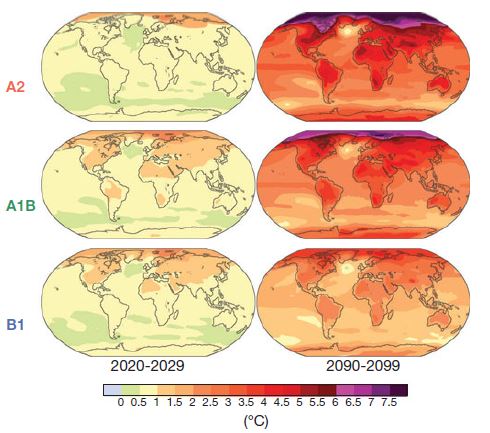
The projections of the IPCC in the Fourth Assessment Report include
Temperature Change Projections:
- Over the next two decades climate will warm at a rate of about 0.2°C (0.4°F) per decade.
- If greenhouse gas emissions continue at or above the present rates, the changes in global climate during this century will very likely be (greater than 90 percent probability) greater than the observed changes during the twentieth century.
- The best estimates of the global temperature increase by the year 2099 for the six emissions scenarios studied for the Fourth Assessment Report range from a low of 1.8°C (3.3°F) to a high of 4.0°C (7.2°F).
Sea-Level Change Projections:
- The accompanying rise in sea level from thermal expansion and increased rates of ice flow from Antarctica and Greenland under these scenarios ranges from about 0.18 meters (7.1 inches) to 0.59 meters (23.2 inches) by the end of this century
Polar Region Change Projections:
- Warming is expected to be greatest over land and in high northern latitudes, and least over the Southern Ocean; snow cover on land is expected to diminish.
- Sea ice is projected to diminish in the Arctic and Antarctic in all emission scenarios, with summer sea ice disappearing in the Arctic by the end of this century in some scenarios.
Weather Pattern Change Projections:
- It is likely that tropical cyclones will become more intense in association with projected increases in sea surface temperatures; the storm tracks of midlatitude cyclones are projected to move poleward.
- Precipitation is very likely to increase in high latitudes and likely to decrease in most subtropical areas over land.
- It is very likely (greater than 90 percent probability) that heat waves, heavy precipitation events, and hot extremes will occur more frequently. Plant and Animal Change Projections:
- Tropical diseases may become more prevalent in regions beyond their current ranges.
- As climate changes, some plant and animal species will exhibit shifts in their distributions; wildfire risk will increase in areas of decreased rainfall.
- With increased global temperatures, risk of species extinction may increase. Among the most troubling findings of the IPCC is that global temperatures are projected to continue increasing and sea level to continue rising even if the concentrations of greenhouse gases are stabilized immediately.

